Background
Crime and violence are often concentrated among young men in marginalized urban settings. These individuals frequently exhibit violent, disruptive, and antisocial behavior. This not only has detrimental effects on the individuals involved but also impacts their victims and communities. One promising approach to addressing these issues is Cognitive Behavioral Therapy (CBT), a short-term, pragmatic form of psychotherapy that aims to alter individuals' automatic behaviors and problematic thinking. Violence prevention programs often apply the components of CBT to reduce aggressive and criminal behaviors among high-risk individuals. These programs leverage trained community workers to conduct sessions, which is vital in low-resource contexts where health professionals are scarce. Existing evidence suggests that CBT-based violence prevention programs are effective in reducing crime, violence, and antisocial behavior in targeted communities.
CBT and Best Bets
|
Global Evidence on CBT
One of the most impactful CBT programs was the Sustainable Transformation of Youth in Liberia (STYL) in Monrovia, Liberia, designed and implemented by the Network For Empowerment Progressive Initiatives (NEPI) and evaluated by Christopher Blattman, Sebastian Chaskel, Julian Jamison, and Margaret Sheridan. Participants in this program, including youth living on the street and ex-combatants of Liberia’s civil war, attended group therapy and one-on-one sessions designed to help them recognize harmful thoughts and behaviors and practice new responses. Some received cash transfers after the program ended. Ten years later, there was a dramatic reduction in a range of antisocial behaviors, including a more than 50 percent fall in drug selling, thefts, robberies, and street fights. In particular, the combined therapy and cash transfers component resulted in more than 200 fewer crimes committed per participant, implying a cost of less than USD 2.50 per crime avoided, making it highly cost-effective.
The findings from two concurrent programs—STYL (Sustainable Transformation of Youth in Liberia) and Becoming a Man (BAM) in Chicago—inspired the design of several future interventions. In Chicago, these included the Rapid Employment and Development Initiative (READI) and Situational Decision-Making (Sit-D). Additionally, the influence of STYL and BAM extended to El Salvador, where a similar CBT-informed program was developed. These programs contribute to a wider evidence base from over 40 years in the United States and Canada that demonstrates the effectiveness of CBT-inspired programs in reducing criminal behavior and recidivism.
Partners
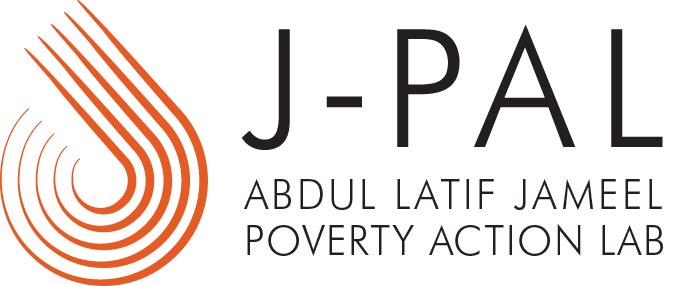 |  |
IPA-supported Studies
The Long-Term Impact of Cognitive Behavioral Therapy and Cash Transfers on High-Risk Young Men in Liberia
In Liberia, the Sustainable Transformation for Youth in Liberia (STYL) program, an 8-week CBT program paired with cash transfers, successfully reduced criminal, violent, and other antisocial behaviors over a ten-year period.
Preventing Violence Against Children in Refugee-Camp Schools in Tanzania
In collaboration with IPA Tanzania and the International Rescue Committee, researchers conducted a randomized evaluation in Tanzania that found that a violence prevention program for teachers in Nyarugusu Refugee Camp had no impact on reducing physical violence against students.
Assessing a Temporary Jobs Program for At-Risk Young Adults in Honduras
With IPA and the World Bank, researchers conducted a randomized evaluation in Honduras to measure whether a temporary jobs program for at-risk young adults—featuring group-based cognitive behavioral therapy, vocational skills training, a temporary job, and a cash grant—improved employment and reduced incidences of violence.
Explore Further
External Studies
- A Quantitative Review of Structured, Group-Oriented, Cognitive-Behavioral Programs for Offenders (David B. Wilson, Leana Allen Bouffard, & Doris L. Mackenzie)
- Addressing High School Dropouts with a Scalable Intervention: The Case of Poder (Ciro Avitabile, Janina Cuevas, Rafael E. De Hoyos Navarro, & Julian C. Jamison)
- Can Recidivism Be Prevented from Behind Bars? Evidence from a Behavioral Program (William Arbour)
- Predicting and Preventing Gun Violence: An Experimental Evaluation of READI Chicago (Monica P. Bhatt, Sara B. Heller, Max Kapustin, Marianne Bertrand, and Christopher Blattman)
- Preventing Violence in the Most Violent Contexts: Behavioral and Neurophysiological Evidence from El Salvador (Lelys Dinarte-Diaz and Pablo Egana-del Sol)
- A Cognitive View of Policing (Oeindrila Dube, Sandy Jo MacArthur, and Anuj K. Shah)
- Thinking, Fast and Slow? Some Field Experiments to Reduce Crime and Dropout in Chicago (Sarah B. Heller, Anuj K. Shah, Jonathan Guryan, Jens Ludwig, Sendhil Mullainathan, and Harold A. Pollack)
Useful Resources
 | Blog | Youth, Violence, and TherapyBlog post co-authored by Lelys Dinarte-Diaz (World Bank), Ricardo Morel (IPA), and Florence Dzame (IPA) sharing relevant evidence on CBT from low- and middle-income countries and marginalized communities, and discussing the road ahead for integration into governance processes and further evidence generation |
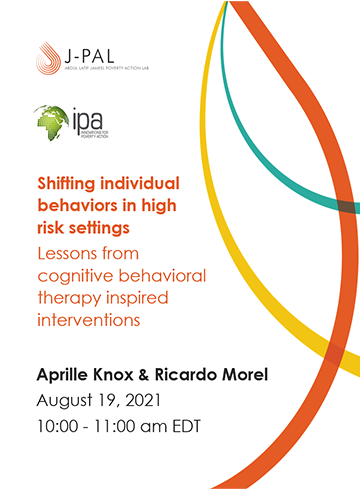 | Webinar | Shifting Individual Behaviors in High-Risk Settings: Lessons from Cognitive Behavioral Therapy Inspired InterventionRecording of a presentation by IPA and J-PAL on the emerging evidence on CBT-inspired interventions aimed at reducing or preventing violent behavior of individuals in high-crime or conflict settings |
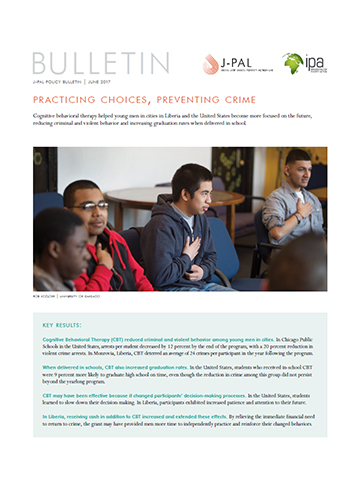 | Practicing Choices, Preventing CrimeIPA and J-PAL policy brief summarizing how CBT-inspired programs have helped young men in cities in Liberia and the United States |
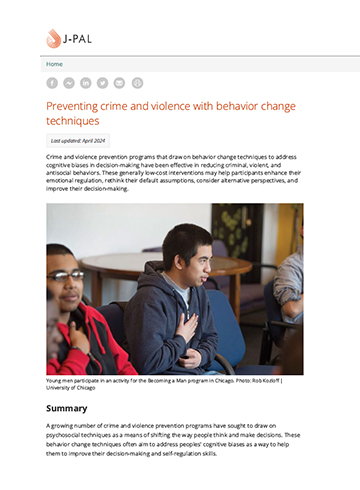 | Preventing Crime and Violence with Behavior Change TechniquesJ-PAL case study summarizing how CBT-inspired programs have helped at-risk individuals in Liberia, the United States, El Salvador, and Canada |
 | Governance, Crime, and Conflict Initiative Evidence Wrap-UpIPA and J-PAL evidence review that draws lessons from randomized evaluations on managing and preventing crime, violence, and conflict. See Chapter 3 for a review of evaluations of psychotherapy interventions, including CBT and CBT-inspired programs. |





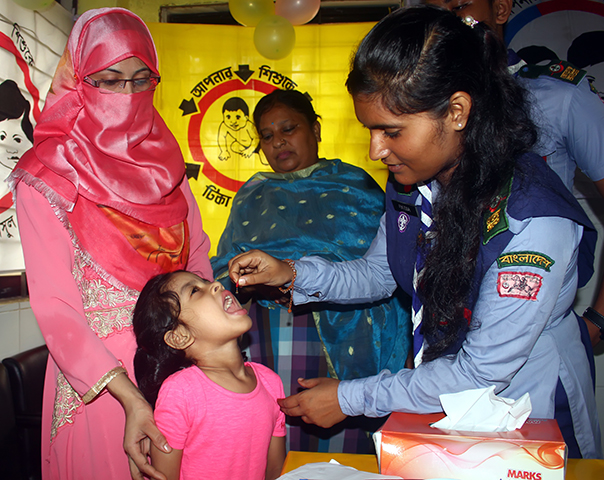

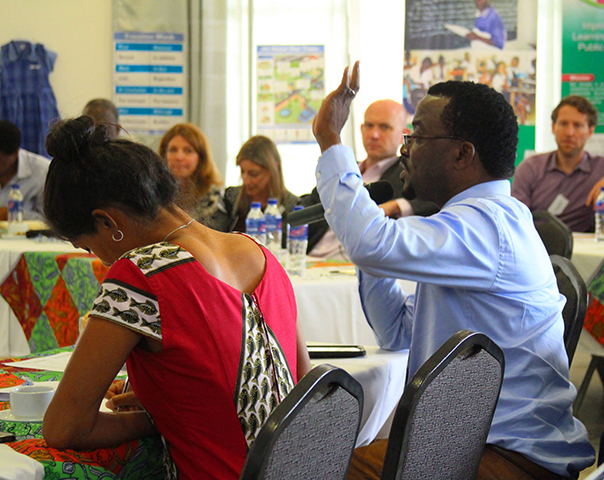
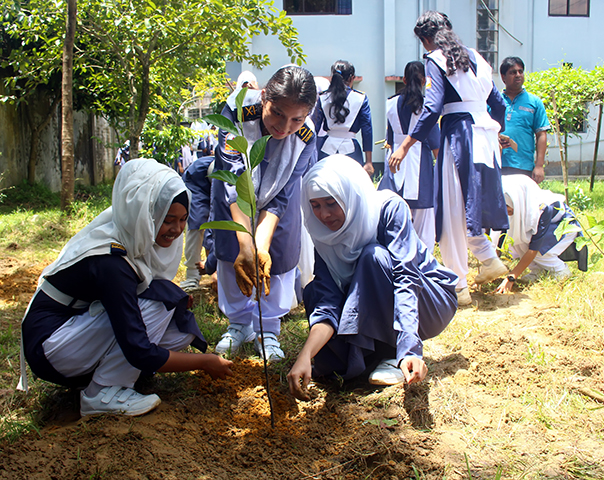

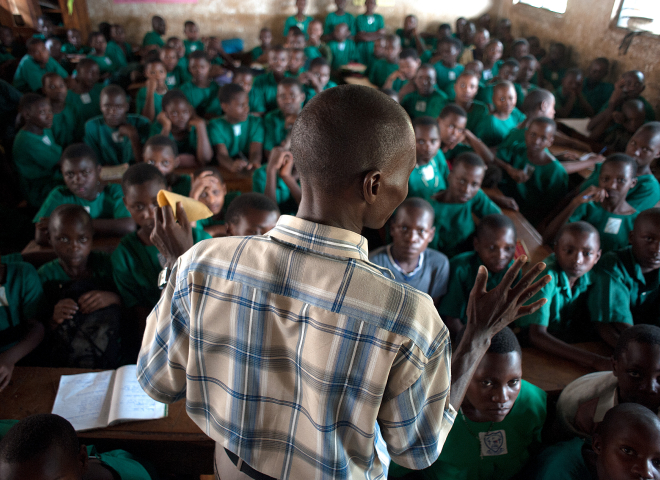

 Based on the extensive evidence of its impacts and relatively low program costs in being delivered by community workers, CBT was identified as one of IPA’s
Based on the extensive evidence of its impacts and relatively low program costs in being delivered by community workers, CBT was identified as one of IPA’s 